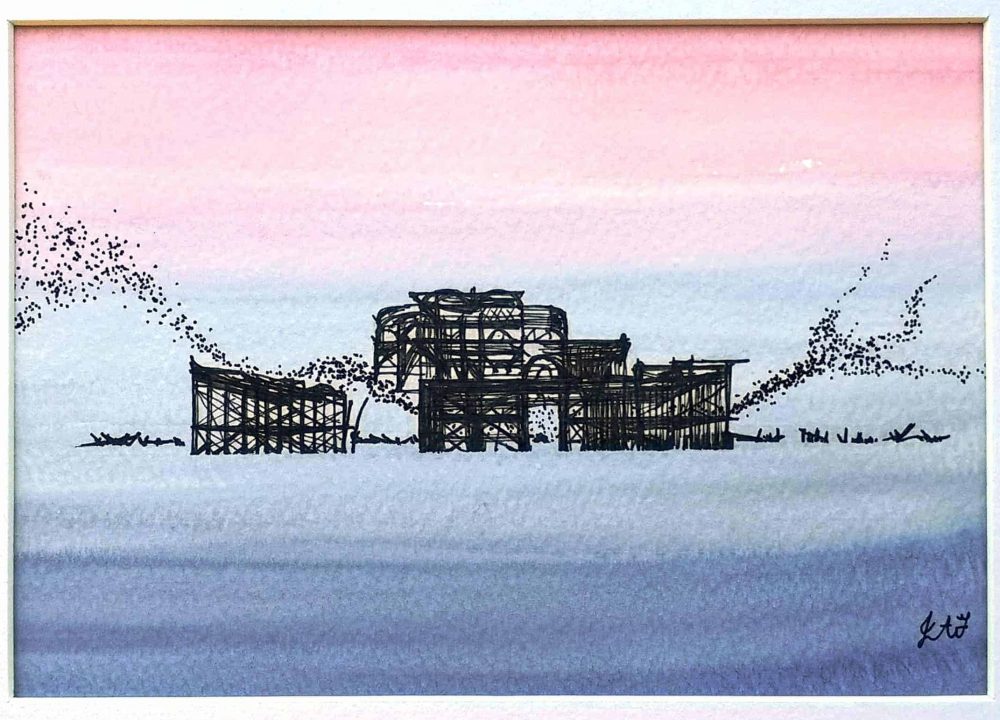Zieler Artist Blogs


Julia Ann Fields
2019
Saving a painting
Artist Julia Ann Field’s four ‘C’s for saving a painting
Whether a beginner or if you’re looking to grow your artistic skills and experiment with different mediums, our series of blogs with artists will give you invaluable advice on what techniques can help you develop your creative skills.
We recently caught up with Julia Ann Field, a Brighton-based self-taught artist, who uses a range of media including oil, acrylic, watercolour, pen and charcoal to depict local landmarks, beauty spots and English landscapes amongst some of her chosen subject matter for her artwork. Here she gives some top tips on how to save a painting.
Julia Ann comments “I believe the creative process potentially has three stages: vision, execution, and sometimes, damage limitation! Artists fear, thrive on, and have to take risks, but risk-taking inevitably leads to occasional disasters. So, is all lost when that final touch actually spoils your painting instead of making it? Not necessarily…


1. Cover
“Unlike accomplished watercolourists, when painting in this medium I have no qualms about using white acrylic paint to cover up my mistakes. It can be mixed with other acrylics to get the desired colour, or with watercolours. Either way, if you’re really unhappy with an area, you might as well give this a try.
“I added my murder of crows in pen in the very final stage of ‘Winter Solstice at Stonehenge’, but I was sorely disappointed with the results. Did I bin it? Fortunately, no, because after reaching for my white acrylic, it sold within the week.
2. Collage
“You decide that you love some areas of your painting but hate others. How can you simultaneously salvage the former while discarding the latter? Well, ‘collage’ just might be the solution you’re looking for.
“In this example, I was satisfied with my Madeira Terraces iron worked arch, but far less so with my birds: they resembled pterodactyls rather than the intended seagulls! My remedy? Collage! The final painting you actually see is made up of the original arch in pen, cut out and stuck on to a new watercolour background. Oh, and presumably the birds were more convincing, as I was once again lucky enough to have a quick sale.


3. Change
“The finished article isn’t exactly what you had in mind? Well, I know exactly how you feel. Windswept hair is what I’d planned for the girl in ‘Brighton Love Birds’, though that’s not what you see in the finished piece. I didn’t like what I’d done, but hopefully I did manage to change her less-than-convincing locks into a more-convincing shaggy hood. The jury’s still out on this though, as it hasn’t sold yet. What do you think?
4. Consider
“I once read that Beryl Cook placed paintings she was unsure about in her attic for a year before reassessing them. Not bad advice at the end of the day. So, even before trying to rescue your painting, pop it out of sight for future consideration! You never know, you may feel differently when seeing it with fresh eyes.”
As a Brighton-based artist, Julia Ann Field loves to create plein air landscapes and ‘sunset silhouettes’ from reference materials. She also focusses on figurative drawing from life as well as from the imagination. You can find out more about Julia Ann here. www.JuliaAnnFieldArt.com

Keep an eye on our blog for more hints and tips from artists to help you get inspired for your next piece of artwork.

